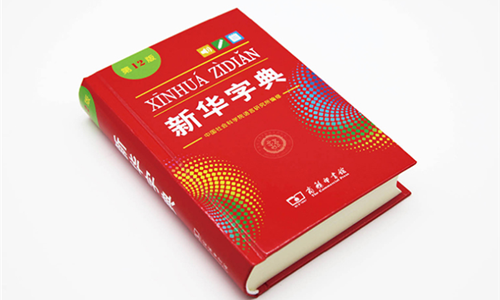活活
Descoperiți simbolismul sunetului în mandarină cu baza noastră de date ideofonă chineză
| Chineză tradiţională | 活活 |
|---|
| Chineză simplificată | 活活 |
|---|
| Pinyin cu tonuri | huó~huó |
|---|
| Pinyin cu ton numeric | huo2~huo2 |
|---|
| Pinyin fără tonuri | huo~huo |
|---|
| ipa_toneletter | xwo˧˥~xwo˧˥ |
|---|
| ipa_tonenumber | xwo35~xwo35 |
|---|
| middle_chinese_baxter | hwat~hwat |
|---|
| middle_chinese_ipa | ɣwat⁴~ɣwat⁴ |
|---|
| old_chinese_ipa | [g]ʷˤat~[g]ʷˤat |
|---|
| language_stage | OC |
|---|
| data_source | Shijing |
|---|
| sensory_imagery | SOUND |
|---|
| morphological_template | BB |
|---|
| Radical | 氵 |
|---|
| character1_freq | 1309.6741 |
|---|
| character2_freq | 1309.6741 |
|---|
| character1_family_size | 98 |
|---|
| character2_family_size | 98 |
|---|
| character1_semantic_radical | 氵 |
|---|
| character2_semantic_radical | 氵 |
|---|
| character1_semantic_radical_freq | 19088.7556 |
|---|
| character2_semantic_radical_freq | 19088.7556 |
|---|
| character1_semantic_family_size | 238 |
|---|
| character2_semantic_family_size | 238 |
|---|
| character1_phonetic_component | 舌 |
|---|
| character2_phonetic_component | 舌 |
|---|
| character1_phonetic_component_freq | 3187.3877 |
|---|
| character2_phonetic_component_freq | 3187.3877 |
|---|
| character1_phonetic_family_size | 5 |
|---|
| character2_phonetic_family_size | 5 |
|---|
| interjecție | notinterjection |
|---|
| notă | 活 guo1 also huo2 (MC hwat) |
|---|
| Chineză tradiţională | 活活 |
|---|
| Chineză simplificată | 活活 |
|---|
| Pinyin cu tonuri | huó~huó |
|---|
| Pinyin cu ton numeric | huo2~huo2 |
|---|
| Pinyin fără tonuri | huo~huo |
|---|
| ipa_toneletter | xwo˧˥~xwo˧˥ |
|---|
| ipa_tonenumber | xwo35~xwo35 |
|---|
| middle_chinese_baxter | hwat~hwat |
|---|
| middle_chinese_ipa | ɣwat⁴~ɣwat⁴ |
|---|
| old_chinese_ipa | [g]ʷˤat~[g]ʷˤat |
|---|
| language_stage | OC-MC-SC |
|---|
| data_source | HYDCD |
|---|
| sensory_imagery | SOUND |
|---|
| Definiție | I1.在活的狀態下。 多指有生命的東西平白受害。 《醒世恒言‧三孝廉讓產立高名》: “昨日議將此樹分為三截, 那樹不忍活活分離, 一夜自家枯死。” 《儒林外史》第三九回: “我們到那裏出兵, 只消幾天沒有水吃, 就活活要渴死了, 那裏還能打甚麼仗!” 楊朔 《亂人坑》: “這些人不是抓來就是擄來的, 鎖在鐵悶子車裏, 吃喝不管, 逢到大熱天, 有時整車人活活地悶死, 也不算稀奇。” 2.有生命的, 充滿生機的。 《西湖佳話‧葛嶺仙跡》: “看他活活一尾魚, 如何一會兒便死了?” 3.簡直。 表示完全如此。 老舍 《龍鬚溝》第二幕: “你呀, 活活的是個半瘋子!”杜鵬程《在和平的日子裏》第二章: “這女孩子的氣質和脾性活活就是青年時代的 梁建 。” II1.水流聲。 一說水流貌。 《詩‧衛風‧碩人》: “ 河 水洋洋, 北流活活。” 馬瑞辰 通釋: “《傳》: 流也。 當為流貌, 形近之訛。 《說文》: 活, 流聲也。 亦當作流貌。” 宋 梅堯臣 《和宋中道喜至次用其韻》: “浸脛水活活, 漫灘石磷磷。” 李廣田 《山之子》: “看東面山崖上的流泉, 聽活活泉聲。” 2.泥濘;滑。 一說在泥水中行走時發出的聲音。 唐 杜甫 《九日寄岑參》詩: “所向泥活活, 思君令人瘦。” 仇兆鰲 注引 趙汸 曰: “活活, 泥水深多, 行有聲也。” 宋 陸游 《出縣》詩: “稻壟牛行泥活活, 野塘橋壞雨昏昏。” 清 錢謙益 《後飲酒》詩之一: “塗潦泥活活, 僮僕手持抱。” |
|---|
| morphological_template | BB |
|---|
| Radical | 氵 |
|---|
| character1_freq | 1309.6741 |
|---|
| character2_freq | 1309.6741 |
|---|
| character1_family_size | 98 |
|---|
| character2_family_size | 98 |
|---|
| character1_semantic_radical | 氵 |
|---|
| character2_semantic_radical | 氵 |
|---|
| character1_semantic_radical_freq | 19088.7556 |
|---|
| character2_semantic_radical_freq | 19088.7556 |
|---|
| character1_semantic_family_size | 238 |
|---|
| character2_semantic_family_size | 238 |
|---|
| character1_phonetic_component | 舌 |
|---|
| character2_phonetic_component | 舌 |
|---|
| character1_phonetic_component_freq | 3187.3877 |
|---|
| character2_phonetic_component_freq | 3187.3877 |
|---|
| character1_phonetic_family_size | 5 |
|---|
| character2_phonetic_family_size | 5 |
|---|
| interjecție | notinterjection |
|---|
| notă | 活 guo1 also huo2 (MC hwat) |
|---|
| Chineză tradiţională | 活活 |
|---|
| Chineză simplificată | 活活 |
|---|
| Pinyin cu tonuri | huó~huó |
|---|
| Pinyin cu ton numeric | huo2~huo2 |
|---|
| Pinyin fără tonuri | huo~huo |
|---|
| ipa_toneletter | xwo˧˥~xwo˧˥ |
|---|
| ipa_tonenumber | xwo35~xwo35 |
|---|
| middle_chinese_baxter | hwat~hwat |
|---|
| middle_chinese_ipa | ɣwat⁴~ɣwat⁴ |
|---|
| old_chinese_ipa | [g]ʷˤat~[g]ʷˤat |
|---|
| language_stage | OC-MC |
|---|
| data_source | Kroll |
|---|
| sensory_imagery | SOUND |
|---|
| Definiție | running and rushing; onom. Walking in mud |
|---|
| morphological_template | BB |
|---|
| Radical | 氵 |
|---|
| character1_freq | 1309.6741 |
|---|
| character2_freq | 1309.6741 |
|---|
| character1_family_size | 98 |
|---|
| character2_family_size | 98 |
|---|
| character1_semantic_radical | 氵 |
|---|
| character2_semantic_radical | 氵 |
|---|
| character1_semantic_radical_freq | 19088.7556 |
|---|
| character2_semantic_radical_freq | 19088.7556 |
|---|
| character1_semantic_family_size | 238 |
|---|
| character2_semantic_family_size | 238 |
|---|
| character1_phonetic_component | 舌 |
|---|
| character2_phonetic_component | 舌 |
|---|
| character1_phonetic_component_freq | 3187.3877 |
|---|
| character2_phonetic_component_freq | 3187.3877 |
|---|
| character1_phonetic_family_size | 5 |
|---|
| character2_phonetic_family_size | 5 |
|---|
| interjecție | notinterjection |
|---|
| notă | 活 guo1 also huo2 (MC hwat) |
|---|
| Chineză tradiţională | 活活 |
|---|
| Chineză simplificată | 活活 |
|---|
| Pinyin cu tonuri | huó~huó |
|---|
| Pinyin cu ton numeric | huo2~huo2 |
|---|
| Pinyin fără tonuri | huo~huo |
|---|
| ipa_toneletter | xwo˧˥~xwo˧˥ |
|---|
| ipa_tonenumber | xwo35~xwo35 |
|---|
| middle_chinese_baxter | hwat~hwat |
|---|
| middle_chinese_ipa | ɣwat⁴~ɣwat⁴ |
|---|
| old_chinese_ipa | [g]ʷˤat~[g]ʷˤat |
|---|
| language_stage | OC |
|---|
| data_source | Shijing |
|---|
| sensory_imagery | SOUND |
|---|
| morphological_template | BB |
|---|
| Radical | 氵 |
|---|
| character1_freq | 1309.6741 |
|---|
| character2_freq | 1309.6741 |
|---|
| character1_family_size | 98 |
|---|
| character2_family_size | 98 |
|---|
| character1_semantic_radical | 氵 |
|---|
| character2_semantic_radical | 氵 |
|---|
| character1_semantic_radical_freq | 19088.7556 |
|---|
| character2_semantic_radical_freq | 19088.7556 |
|---|
| character1_semantic_family_size | 238 |
|---|
| character2_semantic_family_size | 238 |
|---|
| character1_phonetic_component | 舌 |
|---|
| character2_phonetic_component | 舌 |
|---|
| character1_phonetic_component_freq | 3187.3877 |
|---|
| character2_phonetic_component_freq | 3187.3877 |
|---|
| character1_phonetic_family_size | 5 |
|---|
| character2_phonetic_family_size | 5 |
|---|
| interjecție | notinterjection |
|---|
| Chineză tradiţională | 活活 |
|---|
| Chineză simplificată | 活活 |
|---|
| Pinyin cu tonuri | huó~huó |
|---|
| Pinyin cu ton numeric | huo2~huo2 |
|---|
| Pinyin fără tonuri | huo~huo |
|---|
| ipa_toneletter | xwo˧˥~xwo˧˥ |
|---|
| ipa_tonenumber | xwo35~xwo35 |
|---|
| middle_chinese_baxter | hwat~hwat |
|---|
| middle_chinese_ipa | ɣwat⁴~ɣwat⁴ |
|---|
| old_chinese_ipa | [g]ʷˤat~[g]ʷˤat |
|---|
| language_stage | OC-MC-SC |
|---|
| data_source | HYDCD |
|---|
| sensory_imagery | SOUND |
|---|
| Definiție | I1.在活的狀態下。 多指有生命的東西平白受害。 《醒世恒言‧三孝廉讓產立高名》: “昨日議將此樹分為三截, 那樹不忍活活分離, 一夜自家枯死。” 《儒林外史》第三九回: “我們到那裏出兵, 只消幾天沒有水吃, 就活活要渴死了, 那裏還能打甚麼仗!” 楊朔 《亂人坑》: “這些人不是抓來就是擄來的, 鎖在鐵悶子車裏, 吃喝不管, 逢到大熱天, 有時整車人活活地悶死, 也不算稀奇。” 2.有生命的, 充滿生機的。 《西湖佳話‧葛嶺仙跡》: “看他活活一尾魚, 如何一會兒便死了?” 3.簡直。 表示完全如此。 老舍 《龍鬚溝》第二幕: “你呀, 活活的是個半瘋子!”杜鵬程《在和平的日子裏》第二章: “這女孩子的氣質和脾性活活就是青年時代的 梁建 。” II1.水流聲。 一說水流貌。 《詩‧衛風‧碩人》: “ 河 水洋洋, 北流活活。” 馬瑞辰 通釋: “《傳》: 流也。 當為流貌, 形近之訛。 《說文》: 活, 流聲也。 亦當作流貌。” 宋 梅堯臣 《和宋中道喜至次用其韻》: “浸脛水活活, 漫灘石磷磷。” 李廣田 《山之子》: “看東面山崖上的流泉, 聽活活泉聲。” 2.泥濘;滑。 一說在泥水中行走時發出的聲音。 唐 杜甫 《九日寄岑參》詩: “所向泥活活, 思君令人瘦。” 仇兆鰲 注引 趙汸 曰: “活活, 泥水深多, 行有聲也。” 宋 陸游 《出縣》詩: “稻壟牛行泥活活, 野塘橋壞雨昏昏。” 清 錢謙益 《後飲酒》詩之一: “塗潦泥活活, 僮僕手持抱。” |
|---|
| morphological_template | BB |
|---|
| Radical | 氵 |
|---|
| character1_freq | 1309.6741 |
|---|
| character2_freq | 1309.6741 |
|---|
| character1_family_size | 98 |
|---|
| character2_family_size | 98 |
|---|
| character1_semantic_radical | 氵 |
|---|
| character2_semantic_radical | 氵 |
|---|
| character1_semantic_radical_freq | 19088.7556 |
|---|
| character2_semantic_radical_freq | 19088.7556 |
|---|
| character1_semantic_family_size | 238 |
|---|
| character2_semantic_family_size | 238 |
|---|
| character1_phonetic_component | 舌 |
|---|
| character2_phonetic_component | 舌 |
|---|
| character1_phonetic_component_freq | 3187.3877 |
|---|
| character2_phonetic_component_freq | 3187.3877 |
|---|
| character1_phonetic_family_size | 5 |
|---|
| character2_phonetic_family_size | 5 |
|---|
| interjecție | notinterjection |
|---|
| Chineză tradiţională | 活活 |
|---|
| Chineză simplificată | 活活 |
|---|
| Pinyin cu tonuri | huó~huó |
|---|
| Pinyin cu ton numeric | huo2~huo2 |
|---|
| Pinyin fără tonuri | huo~huo |
|---|
| ipa_toneletter | xwo˧˥~xwo˧˥ |
|---|
| ipa_tonenumber | xwo35~xwo35 |
|---|
| middle_chinese_baxter | hwat~hwat |
|---|
| middle_chinese_ipa | ɣwat⁴~ɣwat⁴ |
|---|
| old_chinese_ipa | [g]ʷˤat~[g]ʷˤat |
|---|
| language_stage | OC-MC |
|---|
| data_source | Kroll |
|---|
| sensory_imagery | SOUND |
|---|
| Definiție | running and rushing; onom. Walking in mud |
|---|
| morphological_template | BB |
|---|
| Radical | 氵 |
|---|
| character1_freq | 1309.6741 |
|---|
| character2_freq | 1309.6741 |
|---|
| character1_family_size | 98 |
|---|
| character2_family_size | 98 |
|---|
| character1_semantic_radical | 氵 |
|---|
| character2_semantic_radical | 氵 |
|---|
| character1_semantic_radical_freq | 19088.7556 |
|---|
| character2_semantic_radical_freq | 19088.7556 |
|---|
| character1_semantic_family_size | 238 |
|---|
| character2_semantic_family_size | 238 |
|---|
| character1_phonetic_component | 舌 |
|---|
| character2_phonetic_component | 舌 |
|---|
| character1_phonetic_component_freq | 3187.3877 |
|---|
| character2_phonetic_component_freq | 3187.3877 |
|---|
| character1_phonetic_family_size | 5 |
|---|
| character2_phonetic_family_size | 5 |
|---|
| interjecție | notinterjection |
|---|
| Chineză tradiţională | 活活 |
|---|
| Chineză simplificată | 活活 |
|---|
| Pinyin cu tonuri | huó~huó |
|---|
| Pinyin cu ton numeric | huo2~huo2 |
|---|
| Pinyin fără tonuri | huo~huo |
|---|
| ipa_toneletter | xwo˧˥~xwo˧˥ |
|---|
| ipa_tonenumber | xwo35~xwo35 |
|---|
| middle_chinese_baxter | hwat~hwat |
|---|
| middle_chinese_ipa | ɣwat⁴~ɣwat⁴ |
|---|
| old_chinese_ipa | [g]ʷˤat~[g]ʷˤat |
|---|
| language_stage | OC |
|---|
| data_source | Shijing |
|---|
| sensory_imagery | MOVEMENT |
|---|
| morphological_template | BB |
|---|
| Radical | 氵 |
|---|
| character1_freq | 1309.6741 |
|---|
| character2_freq | 1309.6741 |
|---|
| character1_family_size | 98 |
|---|
| character2_family_size | 98 |
|---|
| character1_semantic_radical | 氵 |
|---|
| character2_semantic_radical | 氵 |
|---|
| character1_semantic_radical_freq | 19088.7556 |
|---|
| character2_semantic_radical_freq | 19088.7556 |
|---|
| character1_semantic_family_size | 238 |
|---|
| character2_semantic_family_size | 238 |
|---|
| character1_phonetic_component | 舌 |
|---|
| character2_phonetic_component | 舌 |
|---|
| character1_phonetic_component_freq | 3187.3877 |
|---|
| character2_phonetic_component_freq | 3187.3877 |
|---|
| character1_phonetic_family_size | 5 |
|---|
| character2_phonetic_family_size | 5 |
|---|
| interjecție | notinterjection |
|---|
| notă | 活 guo1 also huo2 (MC hwat) |
|---|
| Chineză tradiţională | 活活 |
|---|
| Chineză simplificată | 活活 |
|---|
| Pinyin cu tonuri | huó~huó |
|---|
| Pinyin cu ton numeric | huo2~huo2 |
|---|
| Pinyin fără tonuri | huo~huo |
|---|
| ipa_toneletter | xwo˧˥~xwo˧˥ |
|---|
| ipa_tonenumber | xwo35~xwo35 |
|---|
| middle_chinese_baxter | hwat~hwat |
|---|
| middle_chinese_ipa | ɣwat⁴~ɣwat⁴ |
|---|
| old_chinese_ipa | [g]ʷˤat~[g]ʷˤat |
|---|
| language_stage | OC-MC-SC |
|---|
| data_source | HYDCD |
|---|
| sensory_imagery | MOVEMENT |
|---|
| Definiție | I1.在活的狀態下。 多指有生命的東西平白受害。 《醒世恒言‧三孝廉讓產立高名》: “昨日議將此樹分為三截, 那樹不忍活活分離, 一夜自家枯死。” 《儒林外史》第三九回: “我們到那裏出兵, 只消幾天沒有水吃, 就活活要渴死了, 那裏還能打甚麼仗!” 楊朔 《亂人坑》: “這些人不是抓來就是擄來的, 鎖在鐵悶子車裏, 吃喝不管, 逢到大熱天, 有時整車人活活地悶死, 也不算稀奇。” 2.有生命的, 充滿生機的。 《西湖佳話‧葛嶺仙跡》: “看他活活一尾魚, 如何一會兒便死了?” 3.簡直。 表示完全如此。 老舍 《龍鬚溝》第二幕: “你呀, 活活的是個半瘋子!”杜鵬程《在和平的日子裏》第二章: “這女孩子的氣質和脾性活活就是青年時代的 梁建 。” II1.水流聲。 一說水流貌。 《詩‧衛風‧碩人》: “ 河 水洋洋, 北流活活。” 馬瑞辰 通釋: “《傳》: 流也。 當為流貌, 形近之訛。 《說文》: 活, 流聲也。 亦當作流貌。” 宋 梅堯臣 《和宋中道喜至次用其韻》: “浸脛水活活, 漫灘石磷磷。” 李廣田 《山之子》: “看東面山崖上的流泉, 聽活活泉聲。” 2.泥濘;滑。 一說在泥水中行走時發出的聲音。 唐 杜甫 《九日寄岑參》詩: “所向泥活活, 思君令人瘦。” 仇兆鰲 注引 趙汸 曰: “活活, 泥水深多, 行有聲也。” 宋 陸游 《出縣》詩: “稻壟牛行泥活活, 野塘橋壞雨昏昏。” 清 錢謙益 《後飲酒》詩之一: “塗潦泥活活, 僮僕手持抱。” |
|---|
| morphological_template | BB |
|---|
| Radical | 氵 |
|---|
| character1_freq | 1309.6741 |
|---|
| character2_freq | 1309.6741 |
|---|
| character1_family_size | 98 |
|---|
| character2_family_size | 98 |
|---|
| character1_semantic_radical | 氵 |
|---|
| character2_semantic_radical | 氵 |
|---|
| character1_semantic_radical_freq | 19088.7556 |
|---|
| character2_semantic_radical_freq | 19088.7556 |
|---|
| character1_semantic_family_size | 238 |
|---|
| character2_semantic_family_size | 238 |
|---|
| character1_phonetic_component | 舌 |
|---|
| character2_phonetic_component | 舌 |
|---|
| character1_phonetic_component_freq | 3187.3877 |
|---|
| character2_phonetic_component_freq | 3187.3877 |
|---|
| character1_phonetic_family_size | 5 |
|---|
| character2_phonetic_family_size | 5 |
|---|
| interjecție | notinterjection |
|---|
| notă | 活 guo1 also huo2 (MC hwat) |
|---|
| Chineză tradiţională | 活活 |
|---|
| Chineză simplificată | 活活 |
|---|
| Pinyin cu tonuri | huó~huó |
|---|
| Pinyin cu ton numeric | huo2~huo2 |
|---|
| Pinyin fără tonuri | huo~huo |
|---|
| ipa_toneletter | xwo˧˥~xwo˧˥ |
|---|
| ipa_tonenumber | xwo35~xwo35 |
|---|
| middle_chinese_baxter | hwat~hwat |
|---|
| middle_chinese_ipa | ɣwat⁴~ɣwat⁴ |
|---|
| old_chinese_ipa | [g]ʷˤat~[g]ʷˤat |
|---|
| language_stage | OC-MC |
|---|
| data_source | Kroll |
|---|
| sensory_imagery | MOVEMENT |
|---|
| Definiție | running and rushing; onom. Walking in mud |
|---|
| morphological_template | BB |
|---|
| Radical | 氵 |
|---|
| character1_freq | 1309.6741 |
|---|
| character2_freq | 1309.6741 |
|---|
| character1_family_size | 98 |
|---|
| character2_family_size | 98 |
|---|
| character1_semantic_radical | 氵 |
|---|
| character2_semantic_radical | 氵 |
|---|
| character1_semantic_radical_freq | 19088.7556 |
|---|
| character2_semantic_radical_freq | 19088.7556 |
|---|
| character1_semantic_family_size | 238 |
|---|
| character2_semantic_family_size | 238 |
|---|
| character1_phonetic_component | 舌 |
|---|
| character2_phonetic_component | 舌 |
|---|
| character1_phonetic_component_freq | 3187.3877 |
|---|
| character2_phonetic_component_freq | 3187.3877 |
|---|
| character1_phonetic_family_size | 5 |
|---|
| character2_phonetic_family_size | 5 |
|---|
| interjecție | notinterjection |
|---|
| notă | 活 guo1 also huo2 (MC hwat) |
|---|
| Chineză tradiţională | 活活 |
|---|
| Chineză simplificată | 活活 |
|---|
| Pinyin cu tonuri | huó~huó |
|---|
| Pinyin cu ton numeric | huo2~huo2 |
|---|
| Pinyin fără tonuri | huo~huo |
|---|
| ipa_toneletter | xwo˧˥~xwo˧˥ |
|---|
| ipa_tonenumber | xwo35~xwo35 |
|---|
| middle_chinese_baxter | hwat~hwat |
|---|
| middle_chinese_ipa | ɣwat⁴~ɣwat⁴ |
|---|
| old_chinese_ipa | [g]ʷˤat~[g]ʷˤat |
|---|
| language_stage | OC |
|---|
| data_source | Shijing |
|---|
| sensory_imagery | MOVEMENT |
|---|
| morphological_template | BB |
|---|
| Radical | 氵 |
|---|
| character1_freq | 1309.6741 |
|---|
| character2_freq | 1309.6741 |
|---|
| character1_family_size | 98 |
|---|
| character2_family_size | 98 |
|---|
| character1_semantic_radical | 氵 |
|---|
| character2_semantic_radical | 氵 |
|---|
| character1_semantic_radical_freq | 19088.7556 |
|---|
| character2_semantic_radical_freq | 19088.7556 |
|---|
| character1_semantic_family_size | 238 |
|---|
| character2_semantic_family_size | 238 |
|---|
| character1_phonetic_component | 舌 |
|---|
| character2_phonetic_component | 舌 |
|---|
| character1_phonetic_component_freq | 3187.3877 |
|---|
| character2_phonetic_component_freq | 3187.3877 |
|---|
| character1_phonetic_family_size | 5 |
|---|
| character2_phonetic_family_size | 5 |
|---|
| interjecție | notinterjection |
|---|
| Chineză tradiţională | 活活 |
|---|
| Chineză simplificată | 活活 |
|---|
| Pinyin cu tonuri | huó~huó |
|---|
| Pinyin cu ton numeric | huo2~huo2 |
|---|
| Pinyin fără tonuri | huo~huo |
|---|
| ipa_toneletter | xwo˧˥~xwo˧˥ |
|---|
| ipa_tonenumber | xwo35~xwo35 |
|---|
| middle_chinese_baxter | hwat~hwat |
|---|
| middle_chinese_ipa | ɣwat⁴~ɣwat⁴ |
|---|
| old_chinese_ipa | [g]ʷˤat~[g]ʷˤat |
|---|
| language_stage | OC-MC-SC |
|---|
| data_source | HYDCD |
|---|
| sensory_imagery | MOVEMENT |
|---|
| Definiție | I1.在活的狀態下。 多指有生命的東西平白受害。 《醒世恒言‧三孝廉讓產立高名》: “昨日議將此樹分為三截, 那樹不忍活活分離, 一夜自家枯死。” 《儒林外史》第三九回: “我們到那裏出兵, 只消幾天沒有水吃, 就活活要渴死了, 那裏還能打甚麼仗!” 楊朔 《亂人坑》: “這些人不是抓來就是擄來的, 鎖在鐵悶子車裏, 吃喝不管, 逢到大熱天, 有時整車人活活地悶死, 也不算稀奇。” 2.有生命的, 充滿生機的。 《西湖佳話‧葛嶺仙跡》: “看他活活一尾魚, 如何一會兒便死了?” 3.簡直。 表示完全如此。 老舍 《龍鬚溝》第二幕: “你呀, 活活的是個半瘋子!”杜鵬程《在和平的日子裏》第二章: “這女孩子的氣質和脾性活活就是青年時代的 梁建 。” II1.水流聲。 一說水流貌。 《詩‧衛風‧碩人》: “ 河 水洋洋, 北流活活。” 馬瑞辰 通釋: “《傳》: 流也。 當為流貌, 形近之訛。 《說文》: 活, 流聲也。 亦當作流貌。” 宋 梅堯臣 《和宋中道喜至次用其韻》: “浸脛水活活, 漫灘石磷磷。” 李廣田 《山之子》: “看東面山崖上的流泉, 聽活活泉聲。” 2.泥濘;滑。 一說在泥水中行走時發出的聲音。 唐 杜甫 《九日寄岑參》詩: “所向泥活活, 思君令人瘦。” 仇兆鰲 注引 趙汸 曰: “活活, 泥水深多, 行有聲也。” 宋 陸游 《出縣》詩: “稻壟牛行泥活活, 野塘橋壞雨昏昏。” 清 錢謙益 《後飲酒》詩之一: “塗潦泥活活, 僮僕手持抱。” |
|---|
| morphological_template | BB |
|---|
| Radical | 氵 |
|---|
| character1_freq | 1309.6741 |
|---|
| character2_freq | 1309.6741 |
|---|
| character1_family_size | 98 |
|---|
| character2_family_size | 98 |
|---|
| character1_semantic_radical | 氵 |
|---|
| character2_semantic_radical | 氵 |
|---|
| character1_semantic_radical_freq | 19088.7556 |
|---|
| character2_semantic_radical_freq | 19088.7556 |
|---|
| character1_semantic_family_size | 238 |
|---|
| character2_semantic_family_size | 238 |
|---|
| character1_phonetic_component | 舌 |
|---|
| character2_phonetic_component | 舌 |
|---|
| character1_phonetic_component_freq | 3187.3877 |
|---|
| character2_phonetic_component_freq | 3187.3877 |
|---|
| character1_phonetic_family_size | 5 |
|---|
| character2_phonetic_family_size | 5 |
|---|
| interjecție | notinterjection |
|---|
| Chineză tradiţională | 活活 |
|---|
| Chineză simplificată | 活活 |
|---|
| Pinyin cu tonuri | huó~huó |
|---|
| Pinyin cu ton numeric | huo2~huo2 |
|---|
| Pinyin fără tonuri | huo~huo |
|---|
| ipa_toneletter | xwo˧˥~xwo˧˥ |
|---|
| ipa_tonenumber | xwo35~xwo35 |
|---|
| middle_chinese_baxter | hwat~hwat |
|---|
| middle_chinese_ipa | ɣwat⁴~ɣwat⁴ |
|---|
| old_chinese_ipa | [g]ʷˤat~[g]ʷˤat |
|---|
| language_stage | OC-MC |
|---|
| data_source | Kroll |
|---|
| sensory_imagery | MOVEMENT |
|---|
| Definiție | running and rushing; onom. Walking in mud |
|---|
| morphological_template | BB |
|---|
| Radical | 氵 |
|---|
| character1_freq | 1309.6741 |
|---|
| character2_freq | 1309.6741 |
|---|
| character1_family_size | 98 |
|---|
| character2_family_size | 98 |
|---|
| character1_semantic_radical | 氵 |
|---|
| character2_semantic_radical | 氵 |
|---|
| character1_semantic_radical_freq | 19088.7556 |
|---|
| character2_semantic_radical_freq | 19088.7556 |
|---|
| character1_semantic_family_size | 238 |
|---|
| character2_semantic_family_size | 238 |
|---|
| character1_phonetic_component | 舌 |
|---|
| character2_phonetic_component | 舌 |
|---|
| character1_phonetic_component_freq | 3187.3877 |
|---|
| character2_phonetic_component_freq | 3187.3877 |
|---|
| character1_phonetic_family_size | 5 |
|---|
| character2_phonetic_family_size | 5 |
|---|
| interjecție | notinterjection |
|---|





